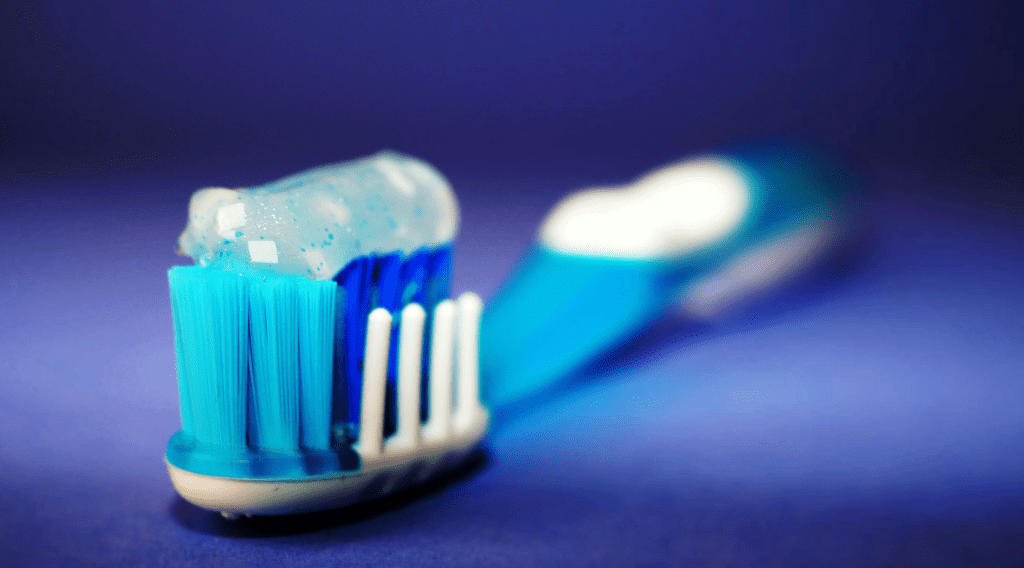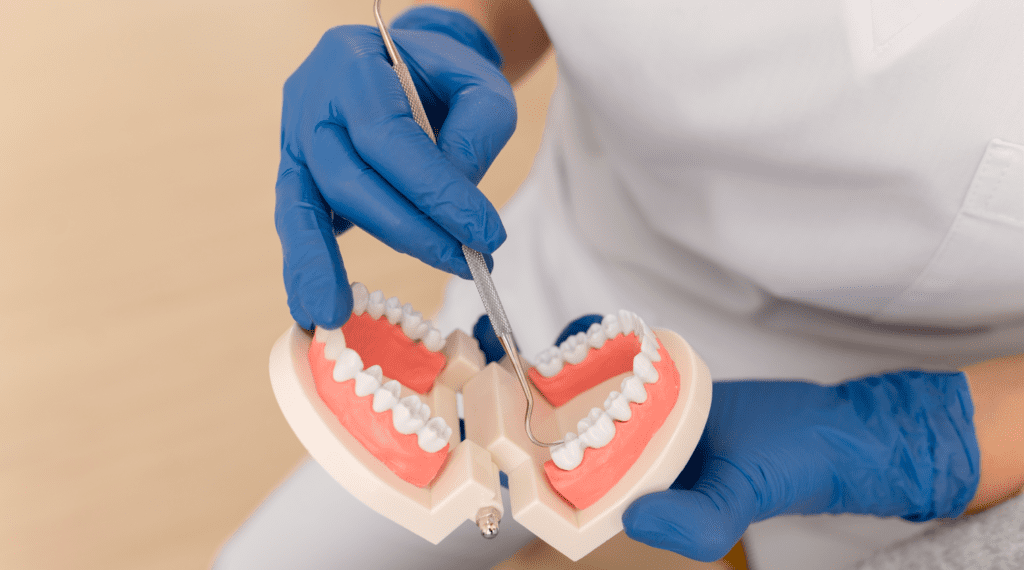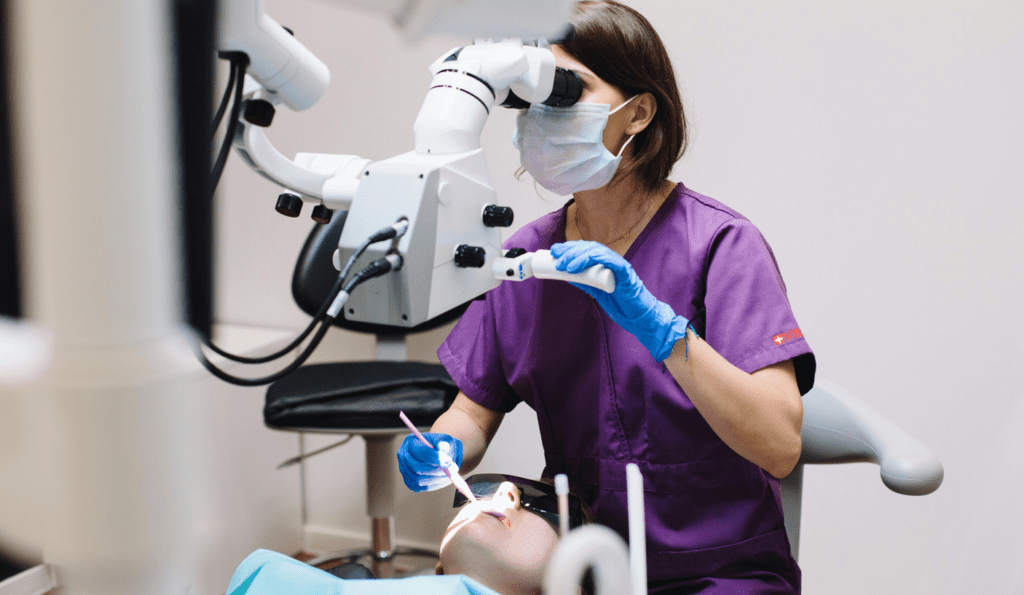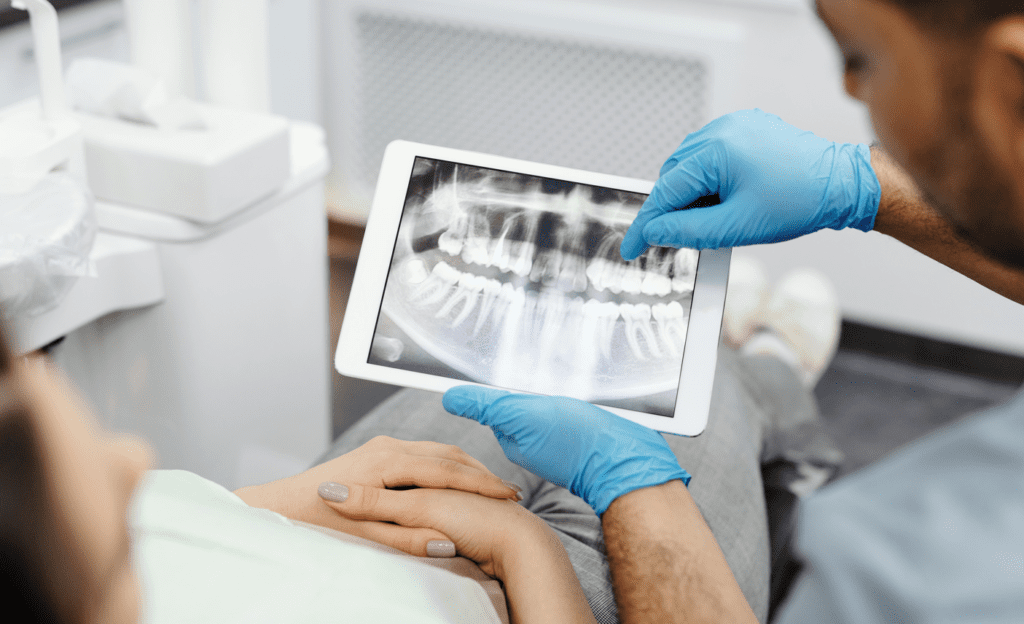Tooth Decay is one of the most common oral health problems, but it often doesn’t receive the attention it deserves. Many times, cavities begin silently, with signs so subtle they can go unnoticed. However, if left untreated, it can progress, causing intense pain, discomfort, and even tooth loss. More than just a simple annoyance, cavities can impact your quality of life and self-esteem.
Taking care of your teeth goes beyond aesthetics; it’s a matter of health and well-being. By understanding what causes Tooth Decay, what its symptoms are, and most importantly, how we can prevent Tooth Decay, you’ll be taking an important step towards ensuring a healthy smile and a fuller life.
In this article, we’ll explore everything you need to know about Tooth Decay, from the first signs to the best forms of prevention and treatment. After all, health begins in the mouth, and with the right information, you can protect your smile effectively and safely.

📜Contents
- 1 What is Tooth Decay? 🤔
- 2 What Causes Tooth Decay? 🧬
- 3 Symptoms of Tooth Decay 🤒
- 4 Diagnosis of Tooth Decay 👨⚕️
- 5 Treatments for Tooth Decay 🦷
- 6 100% Natural Supplement 🍃
- 7 Prevention of Tooth Decay 🛡️
- 8 Impact of Tooth Decay on General Health ❤️🩹
- 9 Education and Awareness About Tooth Decay 🎯
- 10 Myths and Truths About Tooth Decay ⚠️
- 11 Conclusion 💥
- 12 Also Read – More Posts 💡
What is Tooth Decay? 🤔
Definition of Tooth Decay
Tooth Decay is an infectious disease that affects teeth, characterized by the progressive destruction of dental tissues, such as enamel, dentin, and pulp. This condition is caused by the action of acids produced by bacteria present in dental plaque, which constantly forms on teeth. Over time, if left untreated, cavities can lead to intense pain, infections, and even loss of the affected tooth.
Importance of Oral Health
Maintaining good oral health goes beyond displaying a beautiful smile. Carie is one of the main oral health problems that can significantly affect quality of life. Beyond the physical consequences, such as pain and difficulty chewing, cavities can impact self-esteem and interpersonal relationships. Investing in caries prevention and treatment is essential to ensure a healthy and full life.

What Causes Tooth Decay? 🧬
Cavity Formation Process
The development of Tooth Decay begins with the formation of dental plaque, a sticky film that constantly forms on teeth. When we consume foods rich in sugars and carbohydrates, the bacteria present in the plaque metabolize these nutrients, producing acids that attack tooth enamel. Over time, this acid attack causes enamel demineralization, initiating the cavity process.
Role of Bacteria in Cavity Formation
Bacteria, especially Streptococcus mutans, play a central role in the formation of Dental Carie. These bacteria adhere to teeth and, in a sugar-rich environment, proliferate rapidly, producing acids that destroy enamel. Additionally, they can form more resistant biofilms, making it difficult to completely remove dental plaque with brushing alone.
Factors Contributing to Development
Several factors can contribute to the development of Tooth Decay, including:
- Diet: Diets rich in sugars and carbohydrates provide the ideal substrate for acid-producing bacteria.
- Frequent Use of Acidic Beverages: Regular consumption of acidic beverages, such as citrus juices, wines, and soft drinks, can erode tooth enamel, increasing susceptibility to Tooth Decay. These beverages reduce the pH of the mouth, creating an acidic environment that favors tooth demineralization.
- Inadequate Oral Hygiene: Lack of brushing and flossing allows the accumulation of dental plaque.
- Salivary Factors: Saliva plays a protective role, neutralizing acids and remineralizing enamel. Low saliva levels increase the risk of cavities.
- Genetic Factors: Genetic predisposition can influence tooth resistance to cavities and the composition of oral microbiota.

Symptoms of Tooth Decay 🤒
Initial Signs of Cavities
- In the early stages, Tooth Decay can be asymptomatic, making it difficult to detect without a dental examination. However, some signs may indicate the beginning of the process, such as small white spots on the enamel, indicating demineralization.
Tooth Pain and Sensitivity
- As the cavity progresses, tooth sensitivity may occur, especially when consuming hot, cold, sweet, or acidic foods or drinks. Pain can vary from mild to intense and, in more severe cases, can become constant, affecting chewing and speech.
Changes in Tooth Color
- Tooth Decay can also cause changes in tooth color. As the enamel is eroded, the underlying dentin, which has a more yellowish tone, may become visible. In advanced stages, affected teeth may present visible cavities or even cracks.

Diagnosis of Tooth Decay 👨⚕️
Clinical Examination and X-rays
The diagnosis of Tooth Decay is made through a detailed clinical examination by the dentist, which includes visual inspection of the teeth and the use of specific instruments to detect cavities. Dental x-rays complement the diagnosis, allowing visualization of cavities that are not visible to the naked eye, especially between teeth or under existing restorations.
Identification of Tooth Decay
During the examination, the dentist assesses the extent of carious lesions, classifying them according to their depth and location. This identification is crucial for determining the most appropriate treatment, whether preventive, restorative, or more invasive.
Early vs. Advanced Diagnosis
Early diagnosis of Tooth Decay is fundamental to avoid more serious complications. In the initial stages, cavities can be reversed through remineralization and adjustments in oral hygiene. In advanced stages, it may be necessary to resort to fillings, root canal treatments, or tooth extractions.

Treatments for Tooth Decay 🦷
Remineralization (Initial Cavities)
In the early stages of Tooth Decay, when demineralization has not yet formed visible cavities, it is possible to reverse the process through remineralization. This involves the use of products containing fluoride, which help strengthen enamel and restore tooth mineralization.
Fillings and Restorations
When cavities progress and form cavities in the teeth, the most common treatment is filling, also known as restoration. The dentist removes the affected area and fills the cavity with materials such as composite resin, amalgam, or other restorative materials, restoring the shape and function of the tooth.
Root Canal Treatment (Severe Cases)
In cases of advanced Tooth Decay, where the cavity reaches the dental pulp (nerve and blood vessels), root canal treatment may be necessary. This procedure involves removing the infected pulp, cleaning and disinfecting the root canal, followed by filling and sealing the space, preserving the natural tooth.
Aesthetic Procedures for Affected Teeth
In addition to restorative treatments, aesthetic procedures such as porcelain veneers or crowns can be used to improve the appearance of teeth affected by Tooth Decay. These treatments not only restore functionality but also provide a more harmonious and aesthetically pleasing smile.

100% Natural Supplement 🍃
Nature is an incredible source of health and well-being, and this is no different when it comes to oral health. Imagine being able to care for your teeth and gums with the same gentleness and effectiveness that nature offers us. This is where natural supplements like Dentavim come in.
Dentavim was developed with a unique blend of 6 powerful nutrients and mountain oasis plants. It not only aids in the health of your gums and teeth but also leaves your breath as fresh as a morning breeze.
Dentavim is 100% natural, without artificial ingredients that you can barely pronounce. Manufactured in the USA, in facilities that follow the most rigorous quality standards.
Using a supplement like Dentavim is not just taking care of oral health, it’s investing in your self-esteem and overall well-being. After all, a healthy and confident smile can open many doors in life!
Prevention of Tooth Decay 🛡️
Daily Oral Hygiene (Brushing and Flossing)
- Maintaining an adequate oral hygiene routine is the main way to prevent Tooth Decay. Brushing teeth at least twice a day with fluoride toothpaste and using dental floss daily helps remove dental plaque and food residues, preventing the formation of cavities.
Use of Fluoride and Dental Sealants
- Fluoride is an essential mineral in preventing Tooth Decay, as it strengthens tooth enamel and promotes remineralization. The use of toothpaste, mouthwashes, and topical treatments with fluoride can significantly reduce the risk of cavities. Additionally, dental sealants, applied by professionals, offer a protective layer on teeth, especially on biting surfaces, where cavities are most common.
Balanced Diet and Sugar Reduction
- Adopting a balanced diet, rich in fruits, vegetables, and whole foods, and reducing the consumption of sugars and simple carbohydrates is fundamental to preventing Carie. Avoiding frequent snacks and opting for foods that don’t stick to teeth contributes to reducing the formation of harmful acids.
Regular Dental Visits
- Regular visits to the dentist, usually every six months, are essential for the prevention and early detection of Tooth Decay. During these visits, the professional can perform cleanings, apply preventive treatments, and identify any signs of cavities, allowing for quick and effective interventions.

Impact of Tooth Decay on General Health ❤️🩹
Consequences of Untreated Cavities
Ignoring Tooth Decay can lead to serious complications, such as infections, abscesses, and loss of the affected tooth. Additionally, untreated cavities can cause intense pain, difficulties in chewing and speaking, affecting quality of life and emotional well-being.
Relationship Between Tooth Decay and Systemic Diseases
Tooth Decay affects not only the mouth; it can have implications for general health. Recurrent oral infections can increase the risk of heart disease, diabetes, and respiratory complications. Furthermore, chronic inflammation associated with cavities can negatively influence the immune system.
Impact on Quality of Life
The presence of Tooth Decay can significantly impact quality of life, affecting self-esteem, interpersonal relationships, and the ability to perform daily activities comfortably. Pain and discomfort caused by cavities can lead to anxiety and depression, reinforcing the importance of adequate oral health.

Education and Awareness About Tooth Decay 🎯
Importance of Oral Health Education
Education in oral health is fundamental not only for the prevention of Tooth Decay but also to inform the population about risk factors, the importance of oral hygiene, and preventive practices that contribute to reducing the incidence of cavities and other problems, thus making society healthier.
Awareness and Prevention Programs
Awareness programs, carried out by schools, communities, and health institutions, play a crucial role in preventing Tooth Decay. These programs educate about the importance of brushing, flossing, healthy eating, and regular dental visits, encouraging healthy habits from childhood.
The Role of Parents and Schools in Preventing Cavities in Children
Parents and educators play an essential role in preventing Tooth Decay in children. Teaching and encouraging proper oral hygiene practices from an early age, monitoring diet, and ensuring regular dental visits are measures that help establish a solid foundation for lasting oral health.

Myths and Truths About Tooth Decay ⚠️
Demystifying Common Information About Cavities
- There are several myths about Tooth Decay that can lead to inadequate prevention and treatment practices. For example, believing that only sweet foods cause cavities or that a good appearance of teeth indicates the absence of cavities are misconceptions. It’s important to demystify these ideas to promote a correct understanding of the disease.
Truths About Cavity Treatment and Prevention
- The truth is that Tooth Decay is a treatable condition and, in many cases, preventable with simple oral hygiene measures and healthy habits. The use of fluoride, balanced nutrition, correct brushing, and regular dental visits are effective strategies to combat cavities. Additionally, modern treatments offer efficient solutions to restore affected teeth, preserving oral health and aesthetics.

Conclusion 💥
Well, in this article we saw what Tooth Decay is, what causes Tooth Decay, symptoms of Tooth Decay, how we can prevent Tooth Decay, treatments for Tooth Decay, impacts, education and awareness, and myths and truths. I believe the importance of taking care of our oral health has become very clear.
Tooth Decay is more than just a dental problem; it’s a condition that can profoundly affect your overall health and quality of life. Understanding how it develops, recognizing the first signs, and adopting preventive habits are essential steps to maintaining a healthy smile and avoiding future complications.
It’s not just about avoiding pain or discomfort, but investing in yourself and your long-term health. With an adequate oral hygiene routine, regular dental visits, and conscious choices regarding nutrition, you can effectively prevent carie.
Remember, taking care of your teeth is taking care of yourself. Protect your smile, preserve your health, and live with more confidence and well-being. Prevention is always the best path, and now you have the tools to do this in an informed and conscious manner.
Also Read – More Posts 💡





